Dehydrated Food on the Trail
Hiking practice
If you’ve been around for a while then you will be aware there are certain topics you should avoid discussing over dinner. Politics, religion and relationships are just a few and while this narrows down the dinner conversation, it also narrows down the chance of arguments.
Hiking is very much the same. Start talking about food options for hiking and it’s amazing how quickly the conversation becomes heated as individuals passionately defend their preferred meal options and tell you why your choices are wrong. This is definitly a topic I avoid when at camp in the evening.
Having said that I do have my opinions and preferences and as much as I like cooking and eating well when I’m at home, I prefer to keep things simple when I’m on the trail. While my main meal choices tend to be freeze dried I do also integrate dehydrated food into the mix.
The following article talks about the pros and cons of using dehydrated food and provides a few suggestions for dehydrating.
First, what is it?
In basic terms, dehydrating food is food that has had the water removed by drying using a heat source such as the sun (i.e. radiant energy) or heated air (e.g. by electrical energy). As an example, home dehydrators dehydrate food by blowing heated air over the food.
Sometimes sulphite is added to commercial food to aid the drying process – this is causing problems for a growing number of people who have sulphite allergies. Vitamins and minerals are adversely impacted by dehydrating, as opposed to eating it fresh, with the biggest impact being on niacin, thiamine, riboflavin, and vitamins A and C. This is unlikely to be an issue for short hikes but will impact you on longer hikes or if you already have a vitamin and/or mineral deficiency.
Alternatives to dehydrated food include:
- Freeze Dried food which also removes the water through a quick-freezing process followed by a strong vacuum process. This turns the water into vapour but allows the food to be easily rehydrated. It is an advanced process that maintains most of the nutrients and as such is more costly than other types of food preservation such as dehydrating.
- Fresh food which is, well just that, fresh. This is uncooked or cooked food of the kind you would normally consume. That means it has the same moisture content and therefore looks as you would expect and comes in the form of fruit and vegetables, meat, bread, grains etc. Fresh food is heavier and bulkier, and spoils quickly because of the moisture content. Fresh food tends to be limited to very short hikes where the food won’t spoil or get squashed.
Benefits of dehydrated food
- If done properly dehydrated food can last for an extended period (correct storage is the main issue here)
- Its not likely to squash in your pack
- Food taste can be concentrated. Fruit is a good example here with dehydrated fruit tending to be much sweeter
- Lightweight compared to fresh food
- If you are dehydrating your own food you get to choose what goes into a meal which means you are more likely to eat it. You can also create variety in your meals if that’s what you want
- Easy to prepare – just add hot or cold water as required
- Relatively low cost. While there is a cost to dehydrating food, it does work out to be much cheaper than freeze dried meals
Disadvantages of dehydrated food
- Home made dehydrated meals aren’t necessarily nutritionally balanced, it depends on what you include in them. Commercially dehydrated food may be high in nutrition but then again they may not
- If you don’t store dehydrated meals properly at home or your hike, they will often absorb moisture and run the risk of going off
- Be very careful with dehydrated meat meals
- It’s time consuming. Not only do you have to cook the meals/the meal components but you then have to dry them and store them properly
- Some Australian States have very strict import laws and while commercially prepared food is usually acceptable, home prepared food may not pass muster and potentially be confiscated particularly if you are travelling by plane or though quarantine stations. Check quarantine laws very carefully within Australia and avoid taking home prepared meals altogether when going overseas
- The dehydrating process (as opposed to Freeze drying) often means that when you rehydrate the food it turns into mush
Dehydrate your own?
If you are into dehydrating food then go for it. The up sides are you can tailor to your tastes and preferences. The down sides are preparation and drying time. We have owned a quality home dehydrator for about seven years and it takes a considerable time to dry fruits and homemade dips. That will add to your electricity bill and is time consuming.
Nutrient and calorie loss is also something to consider. Not such an issue for you over a few days but could be a challenge on a long hike. If doing long distance or multi-way hiking, look at taking a multivitamin to keep the essential nutrients up.
Most commonly people will dehydrate a discrete food source such as pieces of fruit or slices of meat as opposed to meals but the choice is yours. If you are experimenting on meals for your hikes, practice at home first, store the food for a few weeks, then rehydrate and see what they taste like. Sometimes when you experiment with food it just doesn’t work and its better to find this out when you are still at home and can do something about it.
I prefer to use Freeze-dried meals as my main meal of the day but will make my lunch dips and snack fruit where possible.
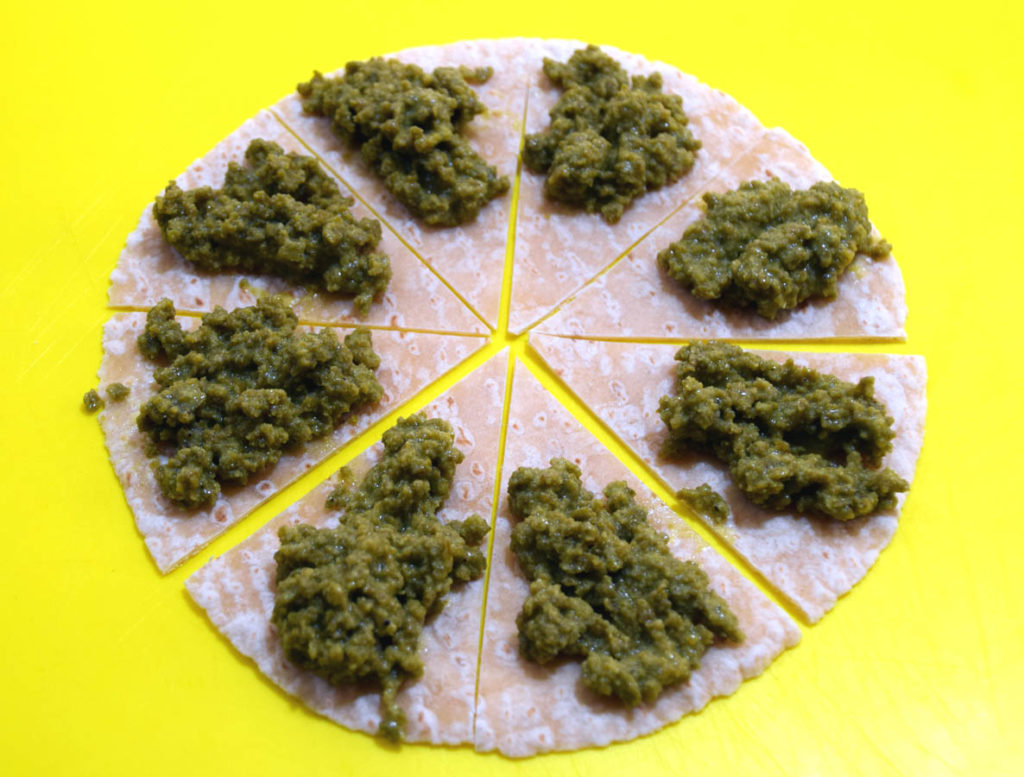
Broad Bean Dip on flat bread
Cooking on the trail?
Some people love cooking on the trail and if that’s you then go for it. Having said that make sure you allow plenty of time to cook your meals and to clean up your cooking implements at the end of each day. If you are trying to make big miles over long days then full on cooking may not be an option due to the time required and this is where the simple addition of hot/cold water to rehydrate food comes in handy.
Even at home we make very basic meals with the exception of when we have visitors and even then, we prefer to eat out. So, on the trail we stick to boiling up water. We aren’t going to be cooking up a storm on the trail – its just not our thing! But if cooking is your thing, go for it but just ensure you’re getting the range of nutrients you need.
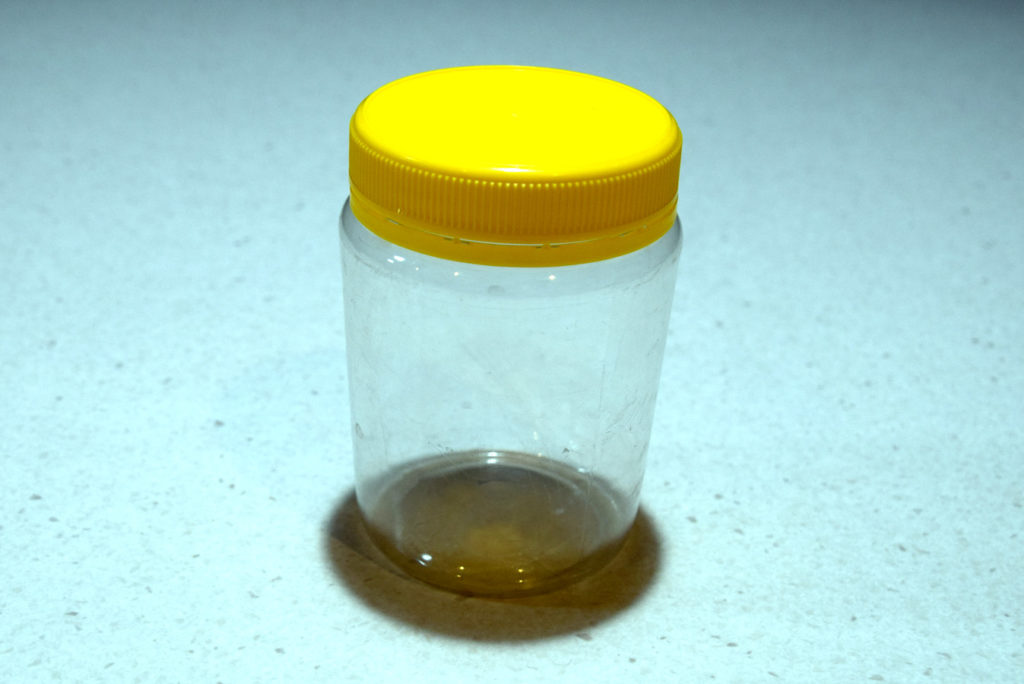
Peanut Butter Jar which is what I use to ‘cook’ (rehydrate) my dips on a hike. I just add a small amount of olive oil and then some water and a few hours late its ready to go. I get this ready just as I am about to start hiking for the day and all I need to do is a final check on constancy and it’s ready to eat for lunch.
Storing dehydrated food
To store any dehydrated meal place in an airtight container in a cool, dry, dark place. Avoid storing dehydrated food for long periods as it may spoil if not done properly. The best option is to make the meals shortly before your trip. Having said that I have used dehydrated Humus and dehydrated Black Bean Dip 13 months after making and it tasted the same as when I first made it.
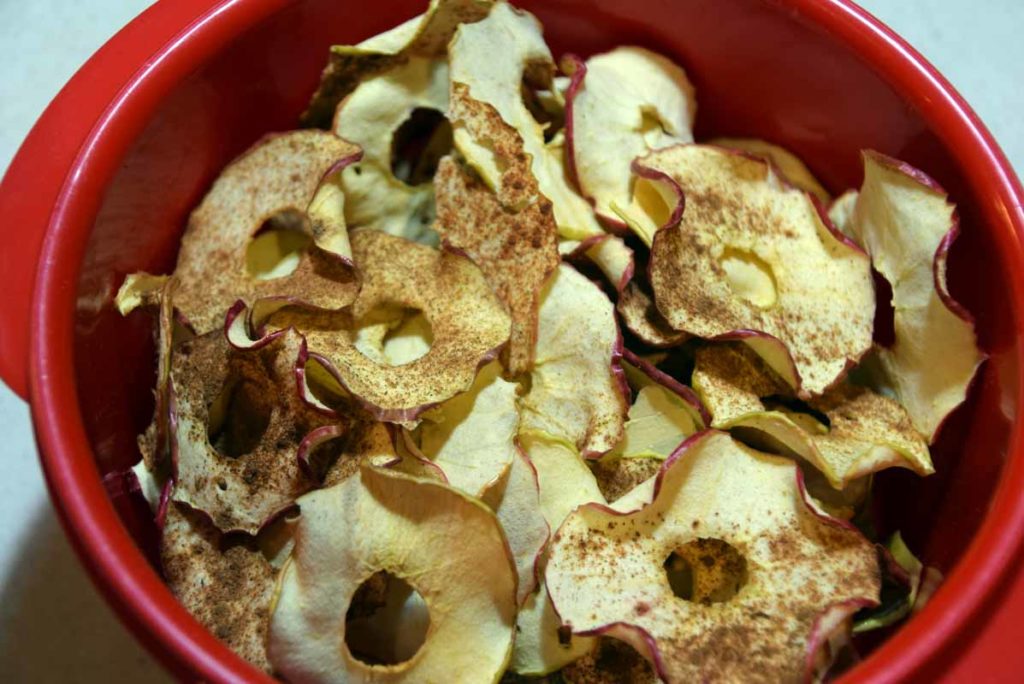
Cinnamon Dried Apple in a good quality plastic container will keep it dry

Sometimes the only option is to use ziplock bags. if you use high grade bags then you can reuse them over and over
Some simple recipes
Lunches
Who said you can’t have dip for lunch? These dips are high in calories (a good thing when hiking) and extremely easy to prepare on trail.
- Black Bean Dip
- I like to make this on the spicy side but that’s a personal choice. I will usually use tinned beans as it greatly reduces the time required in the preparation process. This dip will go on every hiking trip longer than a couple of days
- Broad Bean Dip
- This is by far my most favourite dip but due to the preparation required I cheat and use frozen broad beans. Even then ‘skinning’ the beans is extremely time consuming.
- Hummus
- Who doesn’t love hummus? Using three dips on longer hikes provides a bit of variation and ensures that you don’t get bored with your food
Snacks
The following snacks are simple and easy to make with minimal preparation. I avoid things like mango as it’s just too fiddly, preferring to purchase commercially dehydrated product
- Banana Chips
- I love bananas but have given up eating fresh bananas as they give me an upset stomach. When dried they magically don’t cause me any issues
- Honeyed Bananas
- Different texture and taste to the banana chips and I will happily eat both. The addition of honey makes them super sweet
- Cinnamon Dried Apples
- I hate commercially dehydrated apple, always have, but this recipe is a firm favourite
- Dried Strawberries
- Sweet and tasty
- Dried Rockmelon
- Dried Watermelon
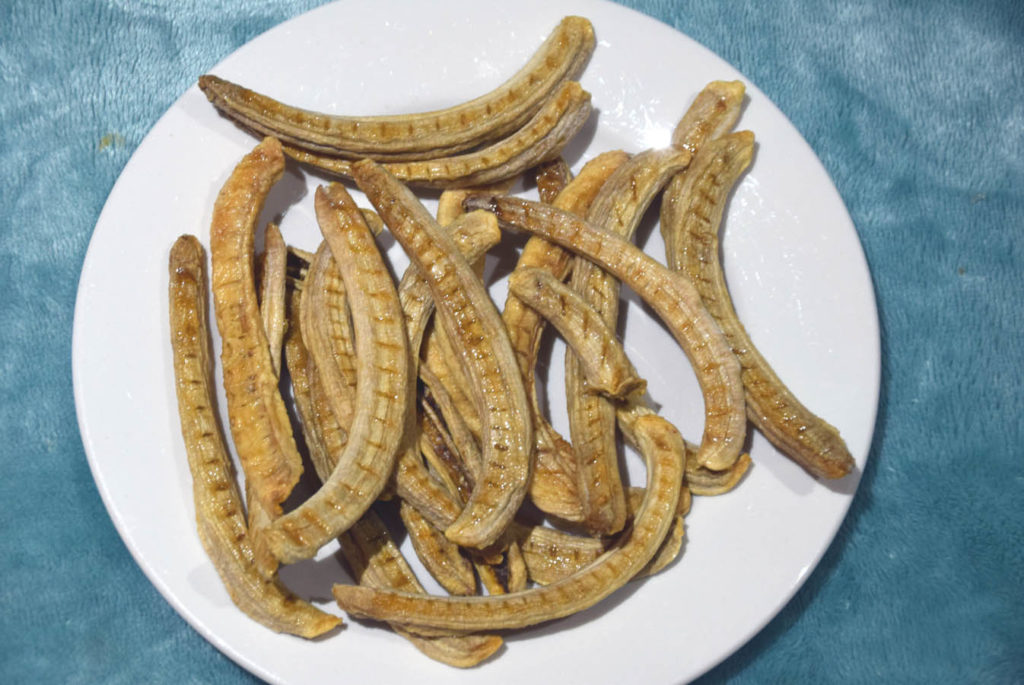
Honeyed Bananas dried and ready to eat
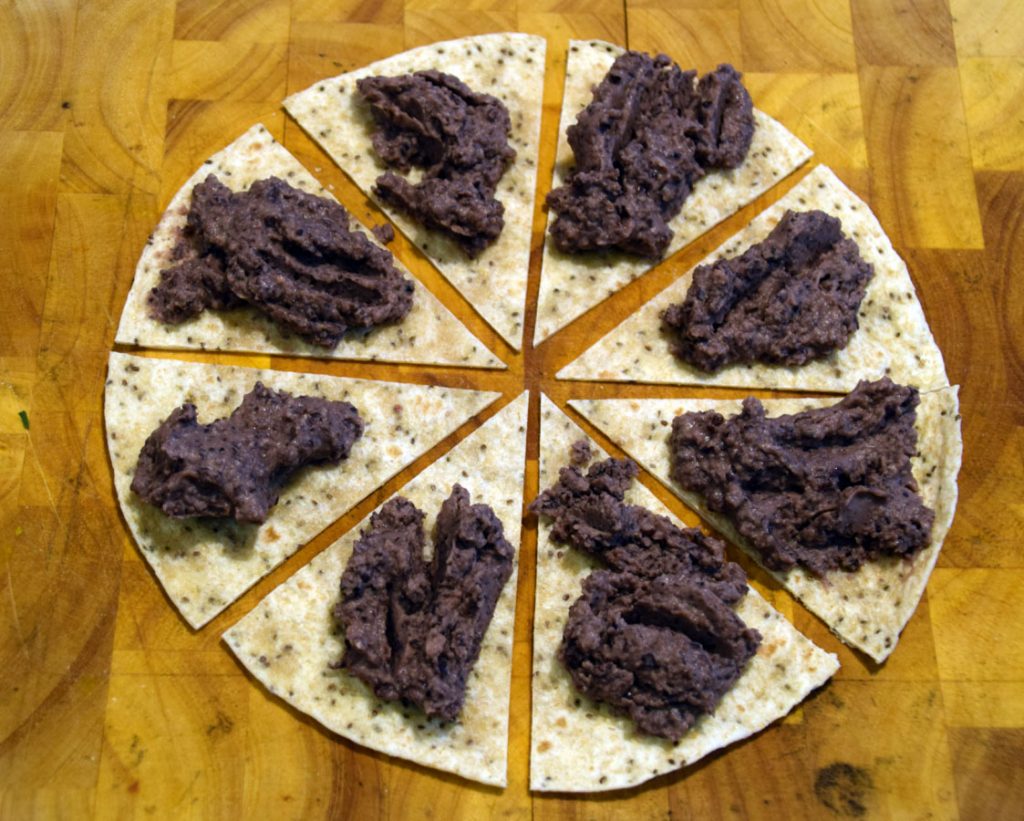
Black Bean Dip on flat bread
Things to consider
Most foods can be dehydrated if done properly. Vegetables and fruit are great options and you can even dehydrate meat to make your own jerky or meals. Be very careful when you use meat and don’t store dehydrated meat for any extended period. Get it wrong and you can end up with food poisoning.
Last Words
There is no right or wrong when it comes to dehydrated food but what I would say is dehydrate what you like to eat. If you don’t think it tastes good you won’t eat it.
I’ve spent a number of years working out what I do and don’t like and so long as quarantine regulations are not an issue, I will always make my dips and fruit snacks and I have never grown tired of my limited selection.
Slowly but surely I keep on adding to the range.